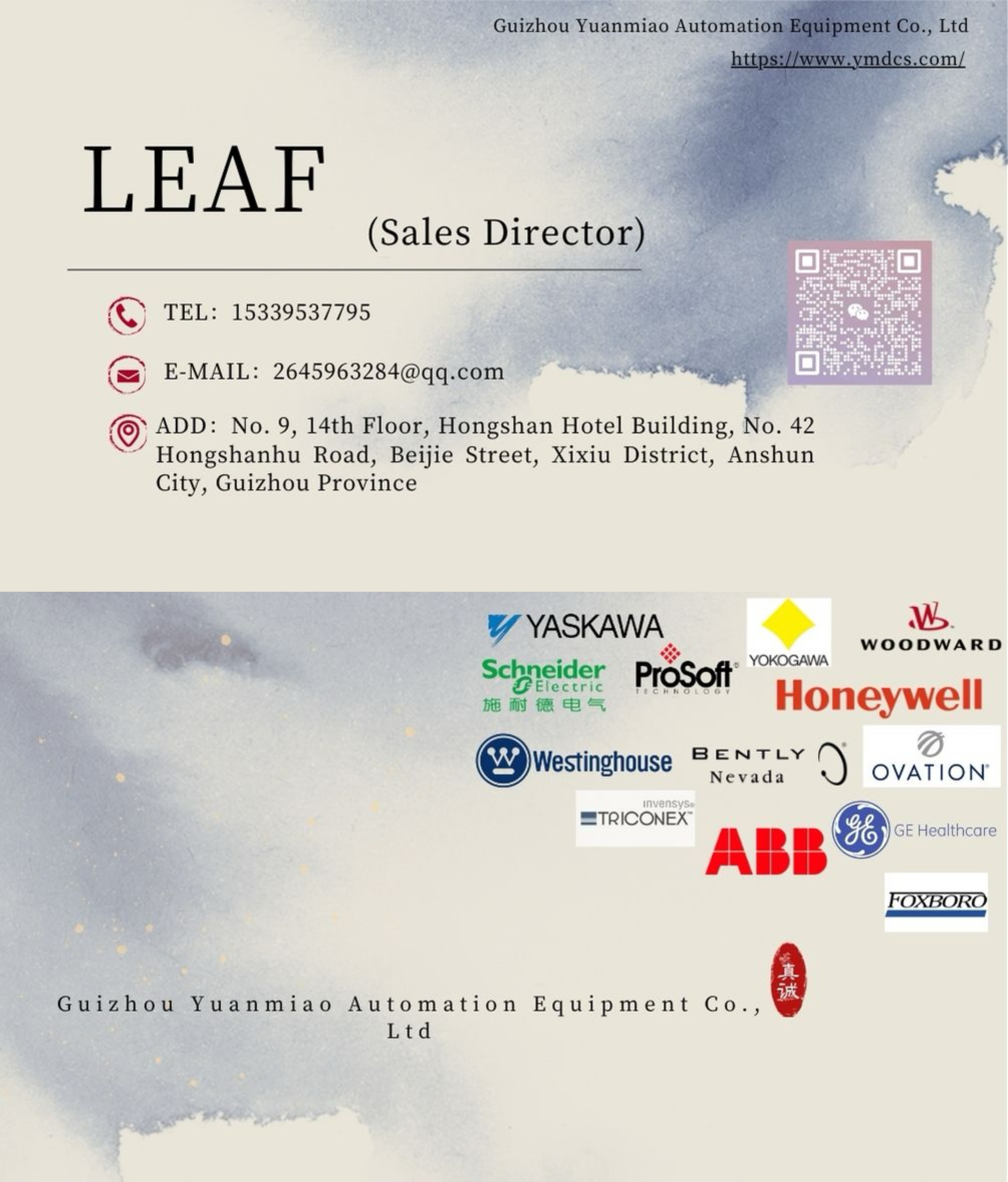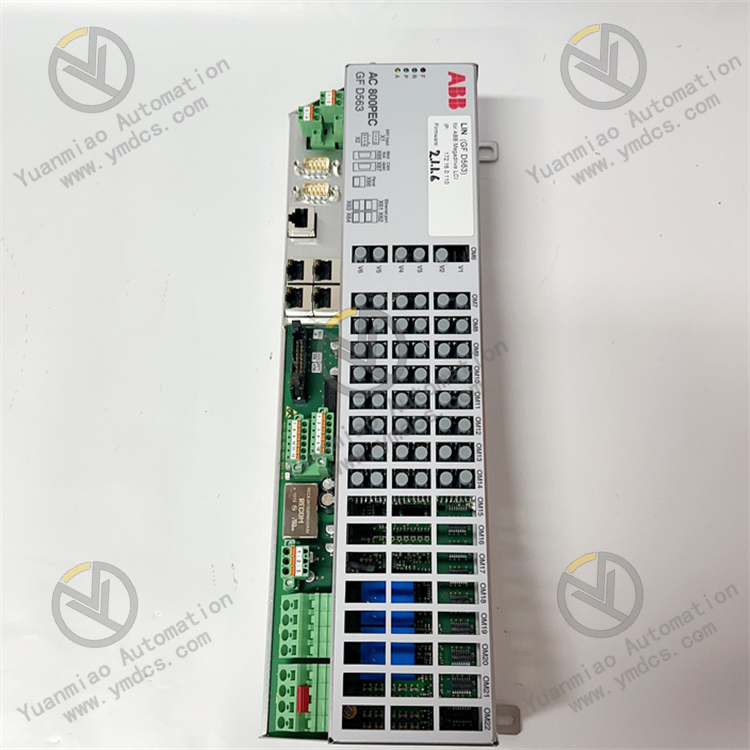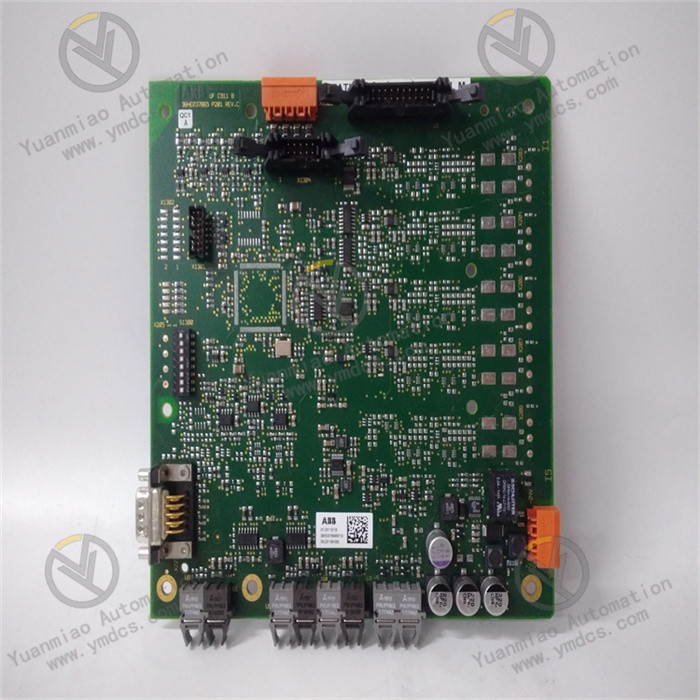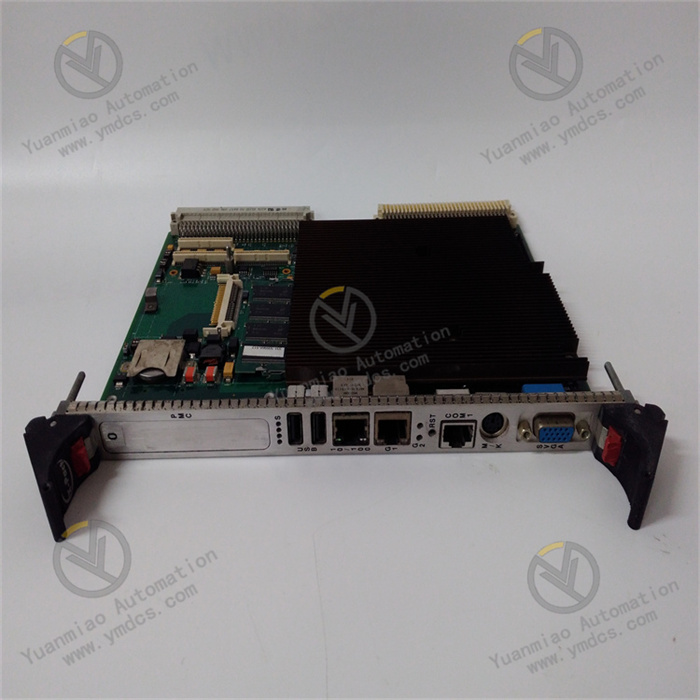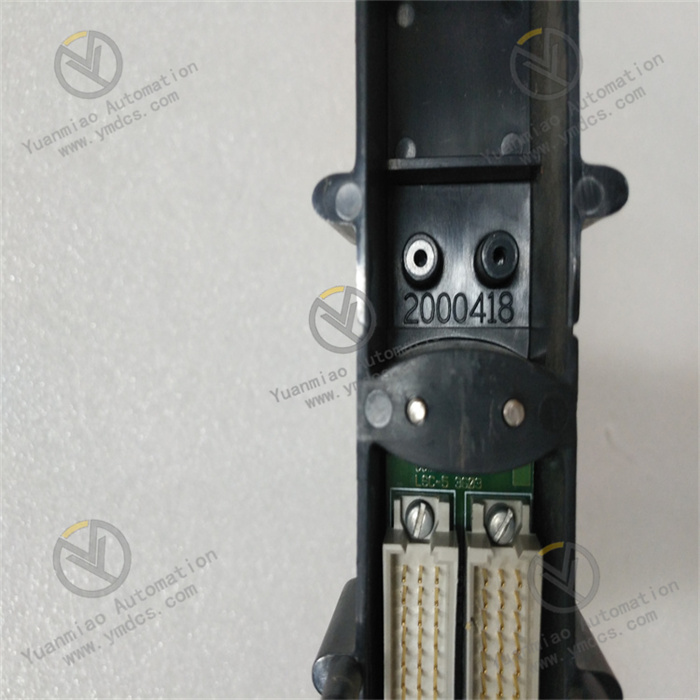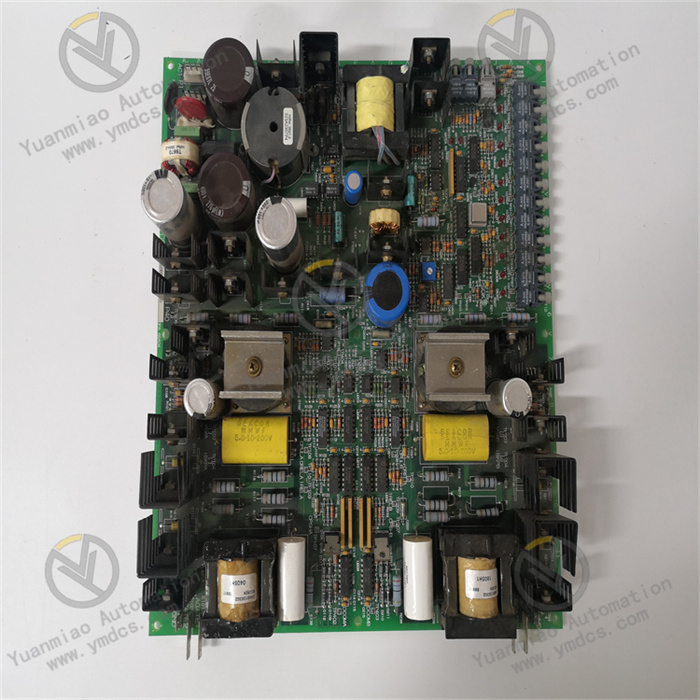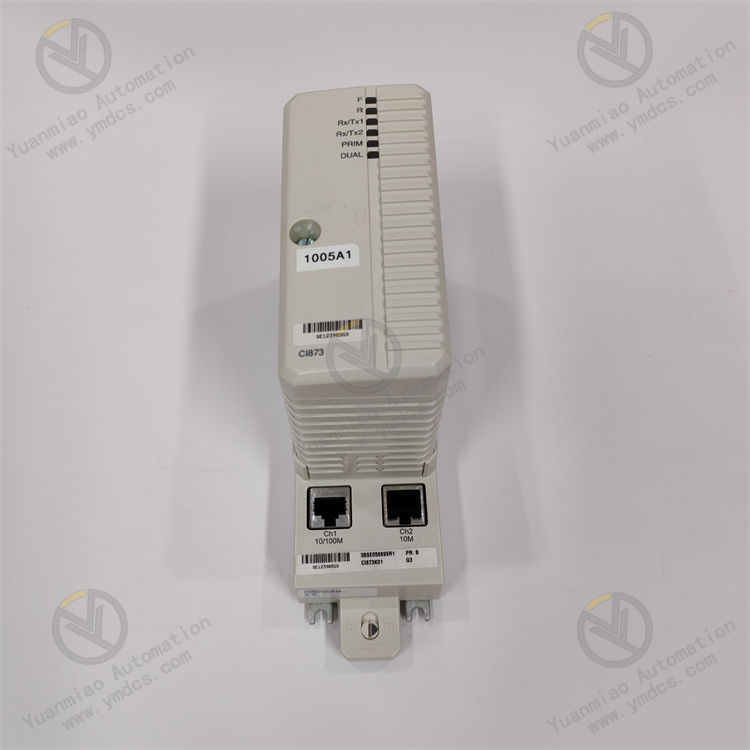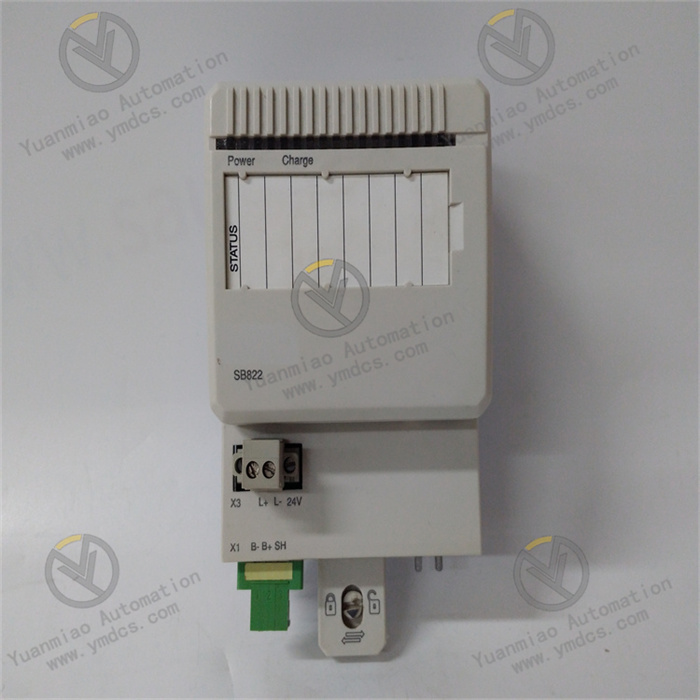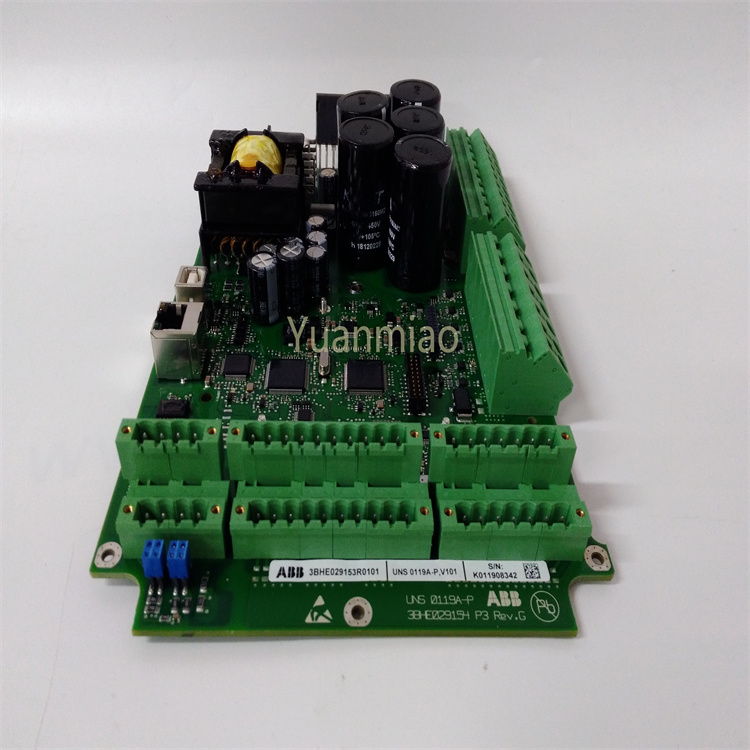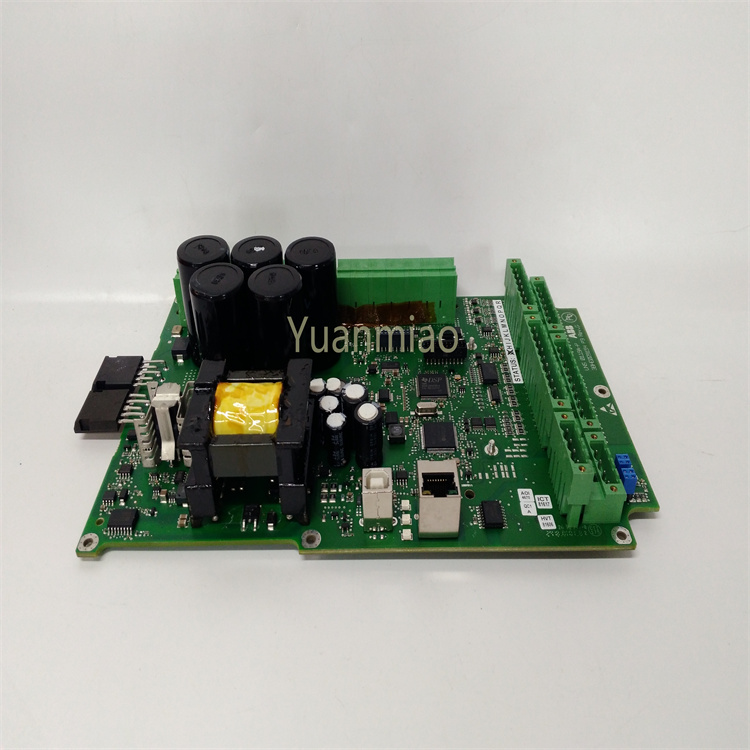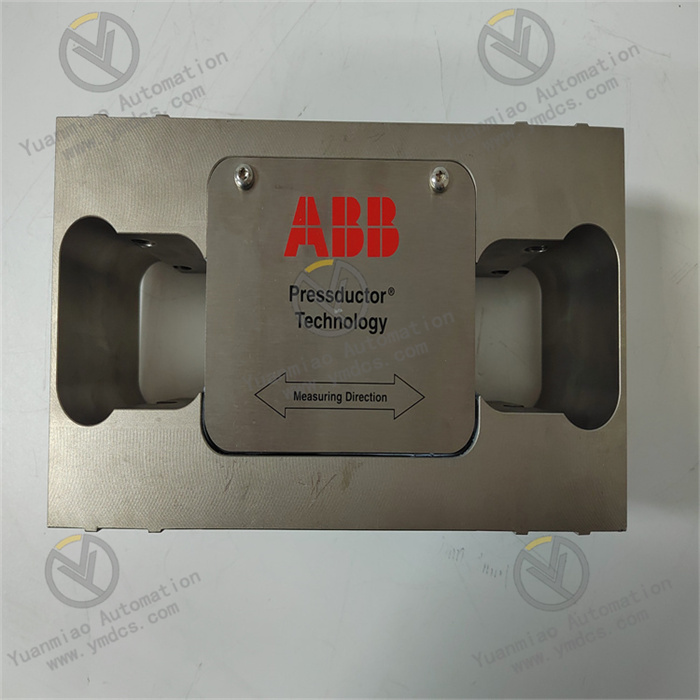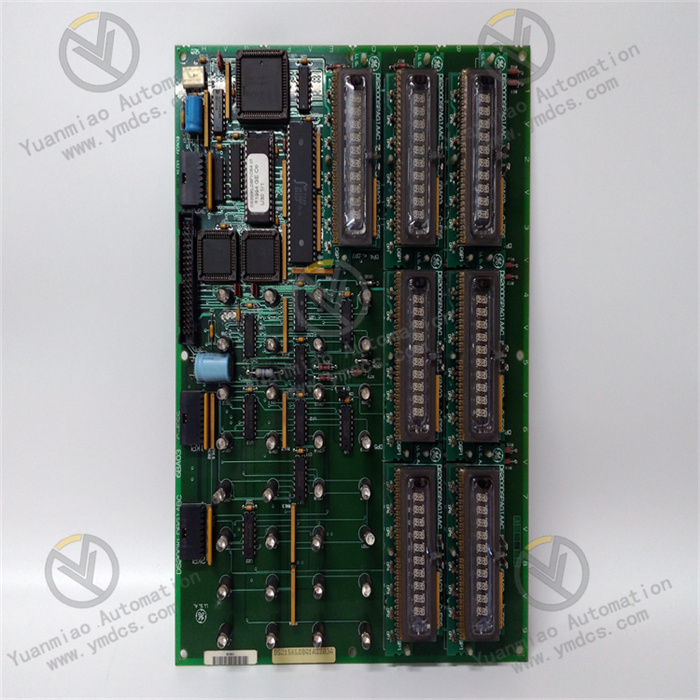Description
Excitation system is an exciting synchronous motor power supply system. The system is mainly composed of power unit, control unit and sensor, which can provide stable DC excitation current to support the normal operation of synchronous motor. This electrical excitation system has several advantages. First of all, the use of advanced power electronics technology and digital control technology, with high efficiency, high reliability, high precision, fast response and other characteristics. Secondly, the system has a programmable function, which can be configured and programmed according to actual needs to meet the needs of different industrial application scenarios. In addition, the system also has various protection functions, such as over current protection, over voltage protection, over voltage protection, overload protection and so on. Can effectively protect the motor and transmission system. When the ABB GFD563A102 3BHE046836R0102 excitation system is used, it must be connected to the synchronous motor and the control system, and the control procedure must be followed. During installation and commissioning, you need to perform safe operations to avoid accidental injury and equipment damage. At the same time, the system needs regular inspection and maintenance to ensure its normal operation and stability.
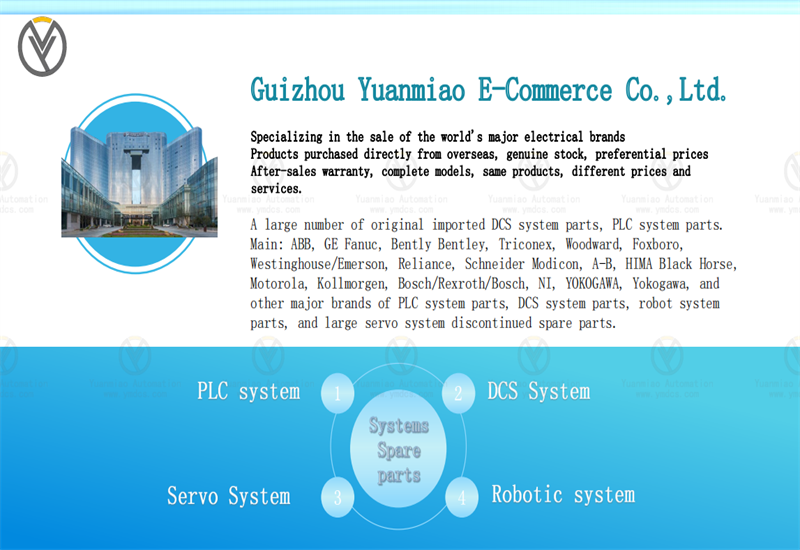
In short,ABB GFD563A102 3BHE046836R0102 electrical excitation system is a powerful, easy to use, safe and reliable industrial control equipment for a variety of industrial applications for synchronous motor excitation control. If you need more information about this product and how to use it, we recommend that you refer to abb's official documentation or contact abb technical support for more detailed information.
The electrical excitation system mainly consists of the following parts:
Excitation power unit: This part is part of the excitation supply that provides DC excitation current to the rotor windings of the synchronous generator.
Excitation regulator: The device that controls the output of the excitation power unit according to the input signal of the control requirement and the given regulation standard.
Magnetic disconnect and rotor overvoltage protection part.
In addition, the electric excitation system includes an automatic voltage regulator, which is an excitation regulator capable of controlling the output of the excitation power unit according to control requirements and specific regulation criteria. The exciter is the part that provides DC excitation current to the rotor winding of a synchronous generator.
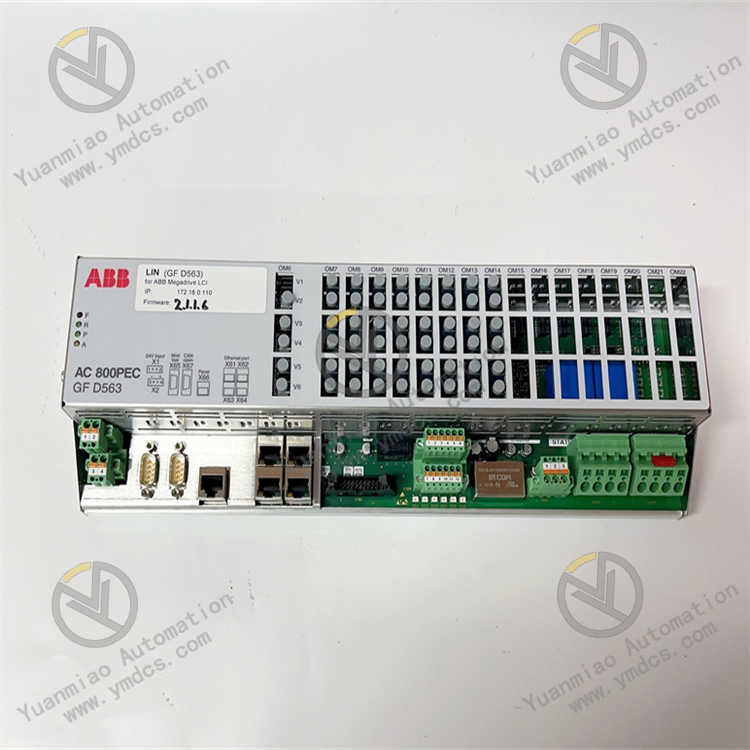
Rectification classification 1. Rotary excitation Rotary excitation also includes DC AC and brushless excitation. 2. Static excitation Static exciter includes potential source static exciter and composite source static exciter. Exciting machine Ac power supply mode according to generator excitation 1. Ac excitation (separate excitation) system It is powered by an AC exciter coaxial with the generator. The system can be divided into four ways: 1) AC exciter (magnetic field rotation) plus static silicon rectifier (brush). 2) AC exciter (magnetic field rotation) plus static thyristor rectifier (brush). 3) AC exciter (armature rotation) plus silicon rectifier (brushless). 4) AC exciter (armature rotation) plus thyristor rectifier (brushless).. 2. Full static excitation (self-excitation) system When the excitation transformer is connected to the machine end of the generator or to the plant power bus of the unit generator set, it is called self-excited excitation mode, and the excitation transformer at the machine end and the excitation converter in series of the generator stator are combined to supply power to the generator rotor. There are also four kinds of this combination method: 1) Connect the DC side in parallel 2) DC side in series 3) Parallel AC side 4) AC side in series effect 1. Adjust the excitation current according to the change of the generator load to maintain the machine terminal voltage as the given value; 2. Control reactive power distribution among generators in parallel operation; 3. Improve the static stability of parallel operation of generators; 4. Improve the transient stability of generators running in parallel; 5. When there is a fault inside the generator, the magnetic field is removed to reduce the degree of fault loss; 6. Implement maximum excitation limit and minimum excitation limit on generator according to operation requirements.

The company focuses on DCS, PLC, robot, large servo four systems
The main products are various modules/cards, controllers, touch screens, servo drivers
Company advantage: Supply imported original products, professional production of spare parts
One year warranty, fast delivery time, complete supply !!!
① 24 hours email response (12 hours);
② For shipment outside Asia, please contact the seller.
ABB Related Products
| 5SHY3545L0006 | 5STP04D4200 |
| 5SHY3545L0009 | 5STP27H1800 |
| 5SHY3545L0010 | 5STP27H2801 |
| 5SHY3545L0014 | 5STP27L1800 |
| 5SHY3545L0016 | 5STP18F1801 |
| 5SHY3545L0020 | 5STP16F2000 |
| 5SGX1060H0003 | 5STP28L4200 |
| 5STP2842L0025 | 5STP28M4200 |
【 Disclaimer 】 We sell new products and discontinued products, independent channels to buy such special products. Guizhou Yuanmiao Automation Equipment Co., Ltd. is not an authorized distributor, dealer or representative of the products featured on this website. All product names/product images, trademarks, brands and microlabels used on this Website are the property of their respective owners. Descriptions, depictions or sales of products with such names/images, trademarks, brands and logos are for identification purposes only and do not imply any association or authorization with any rights holder. This article is from the official website of Guizhou Yuanmiao Automation Equipment Co., LTD. Please attach this link:http://www.ymdcs.com/ABB/
